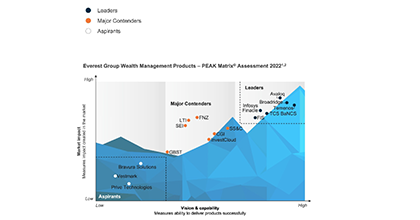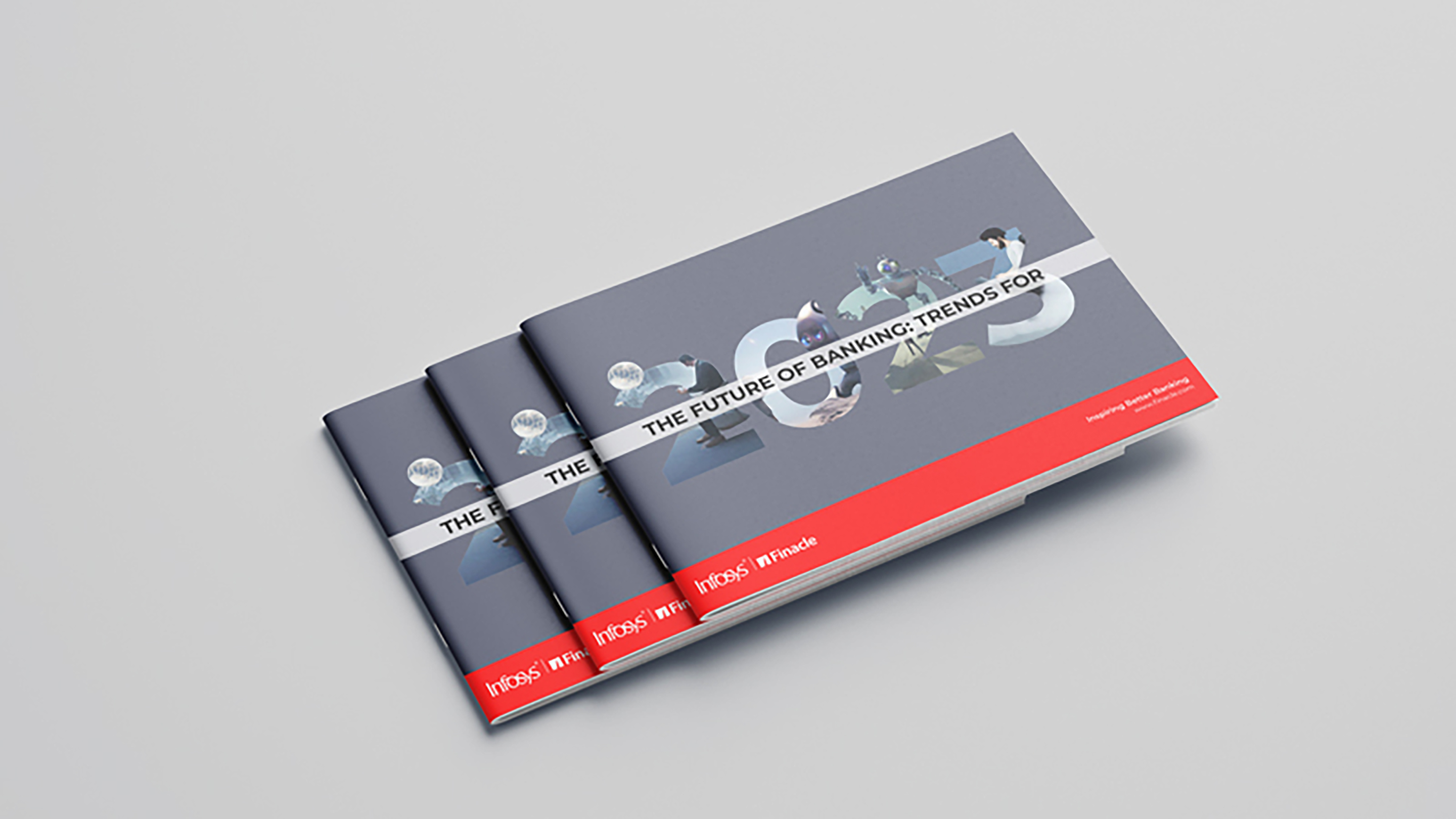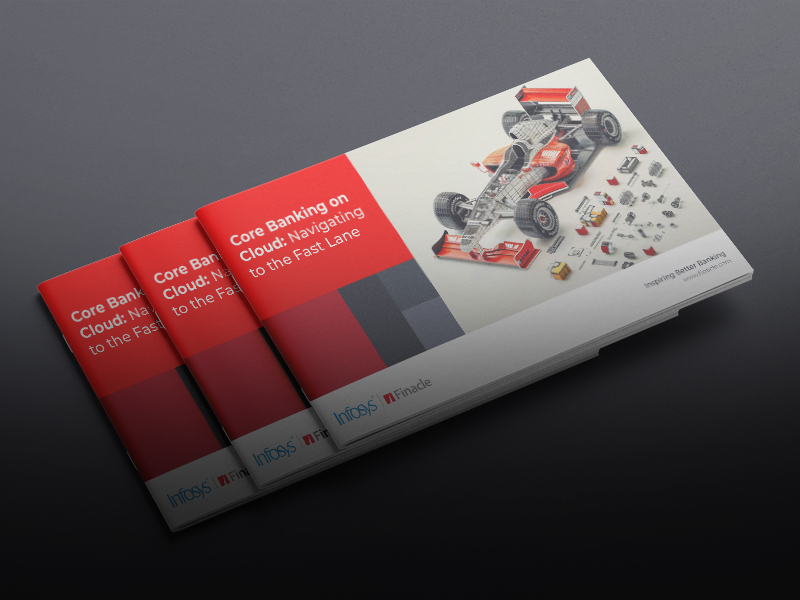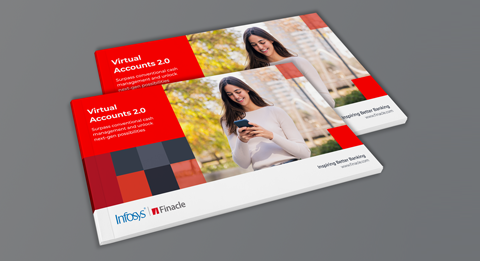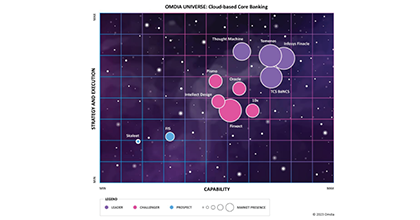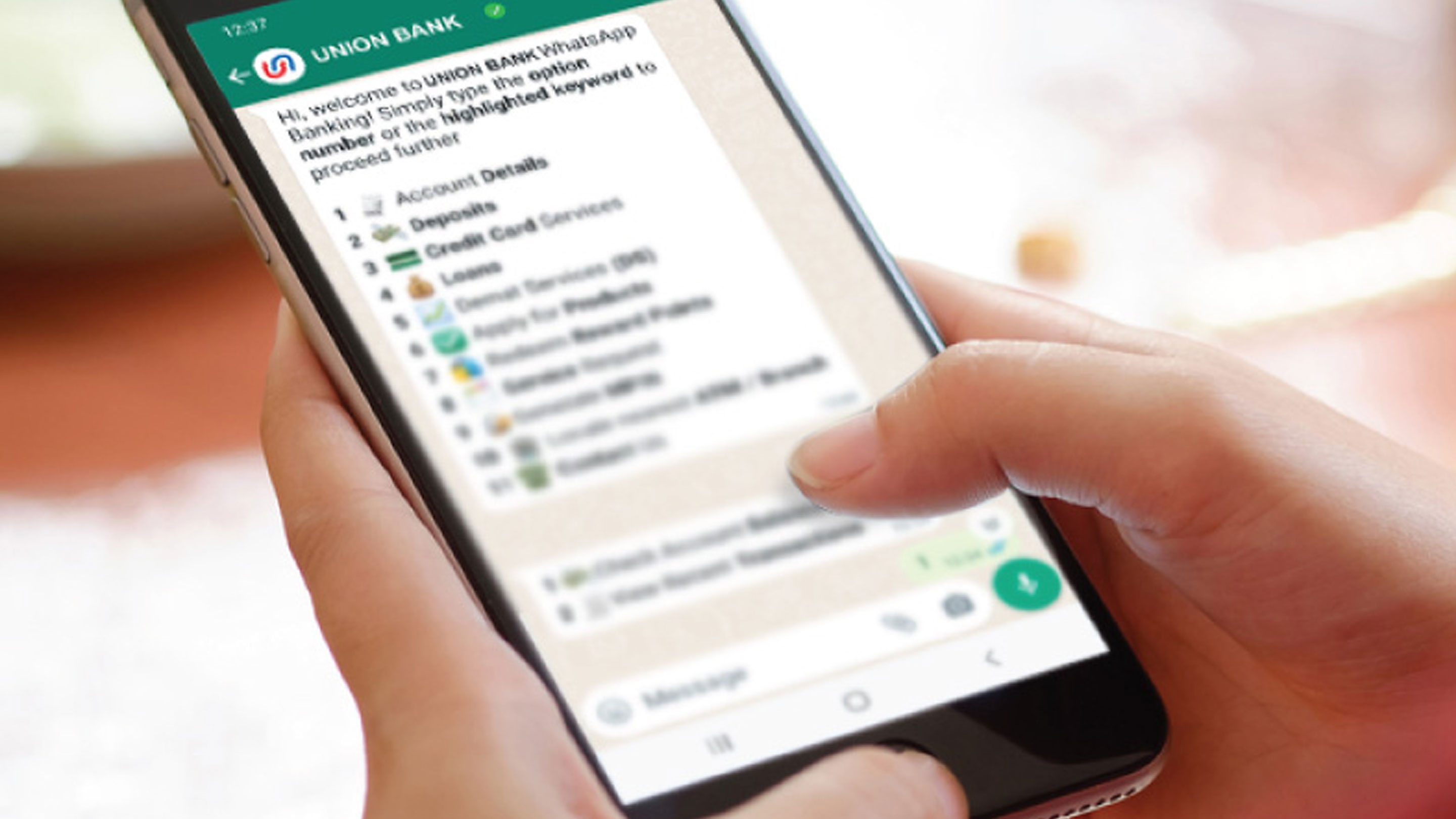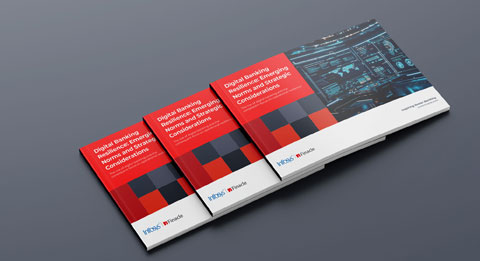-
![]() ESG in bankingESG-conscious banking should create new and future-proof value streams to build a sustainable and resilient business.Read More
ESG in bankingESG-conscious banking should create new and future-proof value streams to build a sustainable and resilient business.Read More -
![Everest Group PEAK Matri Everest Group PEAK Matri]() Everest Group PEAK MatrixA comprehensive solution delivering a full spectrum of wealth products as great experiences. It also improves the productivity of financial advisors and streamlRead More
Everest Group PEAK MatrixA comprehensive solution delivering a full spectrum of wealth products as great experiences. It also improves the productivity of financial advisors and streamlRead More -
![]() Subsidiary of an American Bank in IndonesiaFind out how a leading American bank adapts to a digitalized trade and supply chain finance operations as a part of its larger transformation by leveraging Finacle Trade Finance Solution Suite.Read More
Subsidiary of an American Bank in IndonesiaFind out how a leading American bank adapts to a digitalized trade and supply chain finance operations as a part of its larger transformation by leveraging Finacle Trade Finance Solution Suite.Read More
-
![]() Recomposing Banking: Leading the Digital ContinuumReport gives you a glimpse of the major areas where recomposing banking will create significant impact and value, Infosys Finacle has put together a report on..Read More
Recomposing Banking: Leading the Digital ContinuumReport gives you a glimpse of the major areas where recomposing banking will create significant impact and value, Infosys Finacle has put together a report on..Read More -
![]() Core Banking on Cloud: Navigating to the Fast LaneTake a deep dive into cloud-based core banking and explore the imperatives, opportunities and challenges, and the hallmarks of a robust solution.Read More
Core Banking on Cloud: Navigating to the Fast LaneTake a deep dive into cloud-based core banking and explore the imperatives, opportunities and challenges, and the hallmarks of a robust solution.Read More -
![]() Embracing Payments ComposabilityA step-by-step guide for maximizing Real Time Payment opportunities by embracing Payments Composability...Read More
Embracing Payments ComposabilityA step-by-step guide for maximizing Real Time Payment opportunities by embracing Payments Composability...Read More
-
![]() Shaping Banking’s Next: Banking Technology Trends for 2025 and BeyondThe banking industry has been balancing disruption and opportunity for several years now, and the pace of change shows no signs of slowing as we move into 2025 and beyond.Read More
Shaping Banking’s Next: Banking Technology Trends for 2025 and BeyondThe banking industry has been balancing disruption and opportunity for several years now, and the pace of change shows no signs of slowing as we move into 2025 and beyond.Read More -
![]() Virtual Accounts 2.0: Surpass Conventional Cash Management and Unlock Next-Gen PossibilitiesVirtual Account Management was a groundbreaking shift in the banking landscape, revolutionising use cases like cash concentration, pooling, centralised treasury management, and in-house banking (POBO, ROBO, COBO)Read More
Virtual Accounts 2.0: Surpass Conventional Cash Management and Unlock Next-Gen PossibilitiesVirtual Account Management was a groundbreaking shift in the banking landscape, revolutionising use cases like cash concentration, pooling, centralised treasury management, and in-house banking (POBO, ROBO, COBO)Read More -
![]() Unlocking Hybrid CloudAs banks push forward with their digital transformation agenda, cloud serves as a pivotal enabler. Each bank, at varying stages of adoption, crafts its unique path, dictated by context, regulations, and risk appetite.Read More
Unlocking Hybrid CloudAs banks push forward with their digital transformation agenda, cloud serves as a pivotal enabler. Each bank, at varying stages of adoption, crafts its unique path, dictated by context, regulations, and risk appetite.Read More
-
![]() Banking on CloudThis report from Infosys Finacle delves into the need for accelerating cloud adoption, highlights the current state of the industry, and puts forth key recommenRead More
Banking on CloudThis report from Infosys Finacle delves into the need for accelerating cloud adoption, highlights the current state of the industry, and puts forth key recommenRead More -
![]() Omdia Universe | Cloud-based Core BankingIn the report, Omdia highlights the following key capabilities of leading cloud-based core banking providers:Read more
Omdia Universe | Cloud-based Core BankingIn the report, Omdia highlights the following key capabilities of leading cloud-based core banking providers:Read more
-
![]() Emirates NBDEmirates NBD consolidates its operations on a single version for scalability, agility, and standardization.Read More
Emirates NBDEmirates NBD consolidates its operations on a single version for scalability, agility, and standardization.Read More -
![]() A Global Top 5 BankDiscover how a global top 5 bank headquartered in the US accelerated payments transformation.Read More
A Global Top 5 BankDiscover how a global top 5 bank headquartered in the US accelerated payments transformation.Read More -
![]() Union Bank of IndiaUnion Bank of India launches Union Virtual Connect (UVConn) by leveraging WhatsApp to provide customers personalized banking services.Read More
Union Bank of IndiaUnion Bank of India launches Union Virtual Connect (UVConn) by leveraging WhatsApp to provide customers personalized banking services.Read More

Future of Banking – The Platform Takes Over
Blogs
Uber is arguably the most disruptive eight-year old in history. It has also inspired a breed of precocious companies that have uberized everything from hospitality to professional services. In financial services, glimpses of the same can be seen in the form marketplace lending and open banking initiatives. But total uberization? In my view, banking-as-a-platform in its evolved form is still some years away.
In fact, as of today, there isn’t even a common understanding of banking as a platform. The authors of “Pipelines, Platforms, and the new rules of Strategy” describe platform as – “A platform provides the infrastructure and rules for a marketplace that brings together producers and consumers. The players in the ecosystem fill four main roles but may shift rapidly from one role to another.” The roles defined in the book are: “Owners” of the platform that take care of the governance and IP; “Providers”, who make it possible for the producers and users to interact via a common interface; and finally “Producers” that have the offerings for “Consumers” who use these offerings. Basically, the platform acts as the matchmaker that provides the right environment for the providers, producers, and consumers to interact seamlessly.
Clearly, the platform concept has been around for quite some time – think of your neighborhood convenience store that gave local community counter space to advertise their wares. Or the classifieds of yore that provided a platform for buyers and sellers to connect and advertise their wares. What has changed is that a number of powerful forces have come together to give platform businesses reach, agility and feasibility that they could only have dreamt of in the pre-digital days.
The first of these is plain economics. In the current interest rate environment, banks’ core source of revenue has shrunk, particularly in the developed markets of the United States and Europe. Highly competitive offerings from non-banking players have driven down banks’ income further. Hence the proposition of a digital platform model, which runs on a really low operating cost and distributes risk among several parties, is hugely appealing to providers.
Secondly, consumers are flocking not to a particular bank, but to a particular value. Again thanks to technology shifting banks and opening new relationships have never been so easier. Today, customers will go to that provider who offers them the best, most relevant service and experience. Unlike the brick and mortar bank, which could only be personally attentive to a few, select customers, the platform bank with access to data and insights can personalize at scale.
Thirdly, a highly efficient platform bank can, at least in theory, reach any customer anywhere in the world over its digital channels. It can scale up at speed. And thanks to the ecosystem and open banking, it can also engage the customers of other banks in a servicing relationship, or by selling third party products. If the example of other platform businesses has taught us anything it is that eventually, couple of innovative players will rule the business. Every bank (and non-bank) wants to be the winning platform that takes all..
But it will take some doing to get there. To start with, banks have to transform their ownership mindset (I will serve my customers with my products) with the clear realization that the only thing that matters is to give customers what’s best for them, and if that means serving up a rival product, then so be it. They will also have to expose their APIs to allow developers to create the right offerings on their platform. Banks also need to shift their business focus from earning interest income to monetizing insights from data. For example, if the insight says that a customer should be offered a third party product, then the bank must charge a fee from that party for generating this lead.
These are massive changes, yet they are feasible and perhaps inevitable also. A bank that makes the crossover safely will be able to differentiate itself from other banks purely on the strength of its quality of experience.
That being said, not all banks are cut out to make this shift. A platform mindset requires a certain kind of leadership and culture, which most banks will struggle to provide. Some of them might choose to become product manufacturing specialists, and distribute their offerings through platform banks.
We believe that the “platformization” of banking has already begun. The examples like Deutsche Bank hub for SMEs or LendingClub, and WeChat are the early reflections on the new model emerging in the industry. And will there ever be an Uber-size platform among banks? With the industry being as regulated as it is and the rules for systemic risk around large banks, it looks rather difficult. Still, that is what the ambitious, progressive banks will aspire to. But Uber-sized or not, banks that succeed in their platform play will pull far ahead of their rivals. And those that don’t might be relegated to the role of a backend utility. If they survive, that is.



©2025 -Edgeverve Systems Limited | All rights reserved

